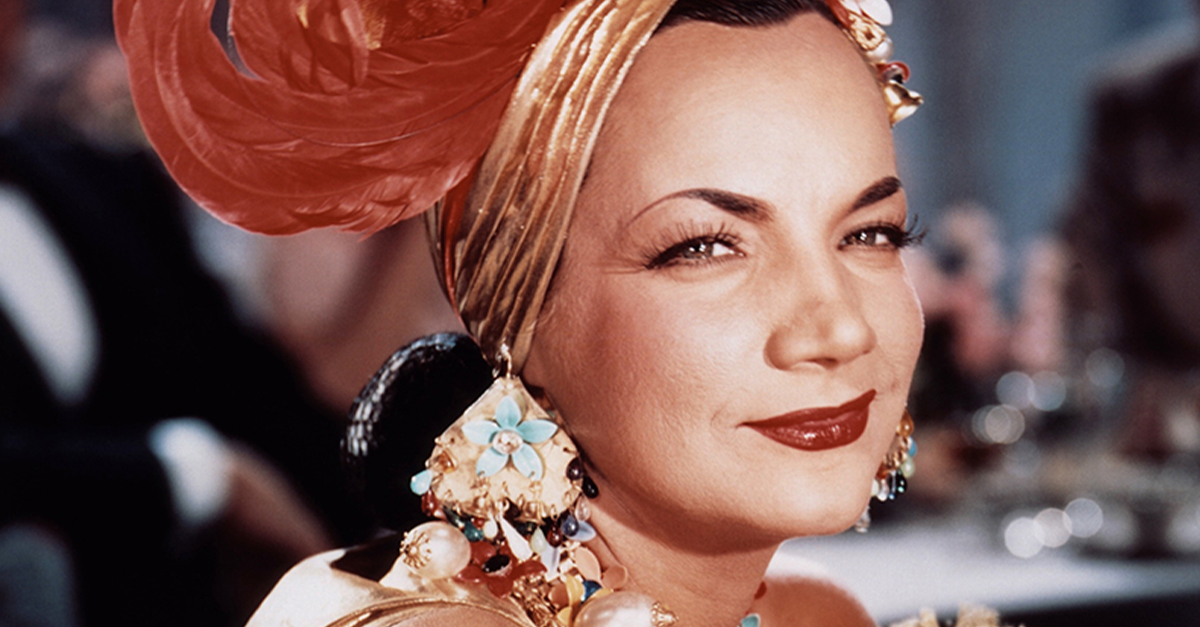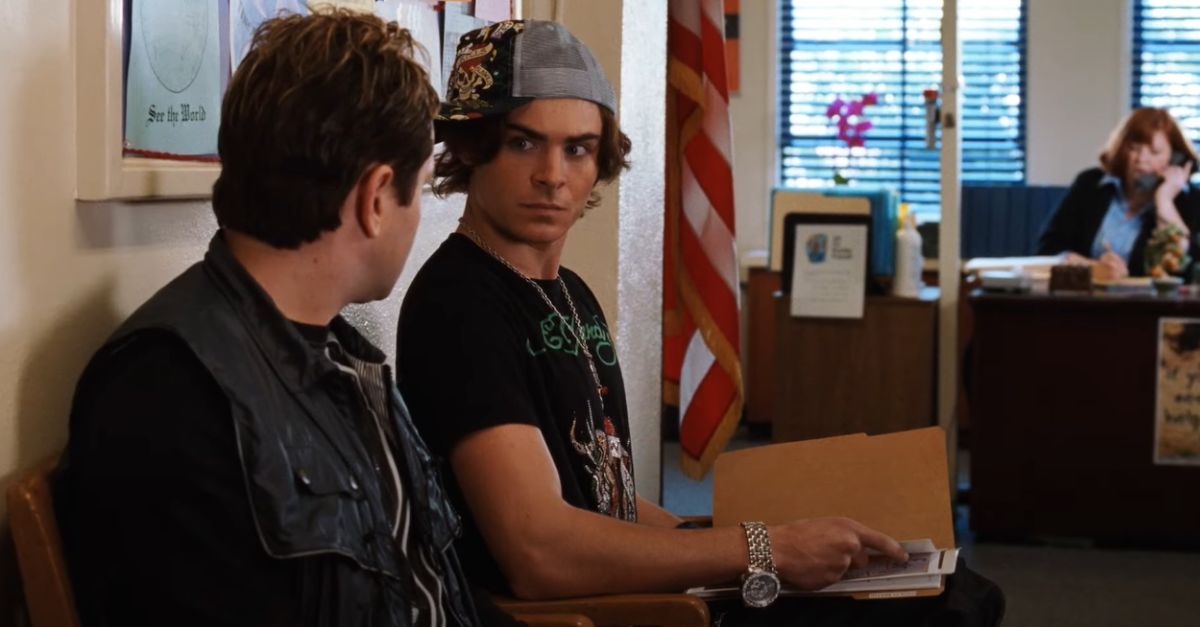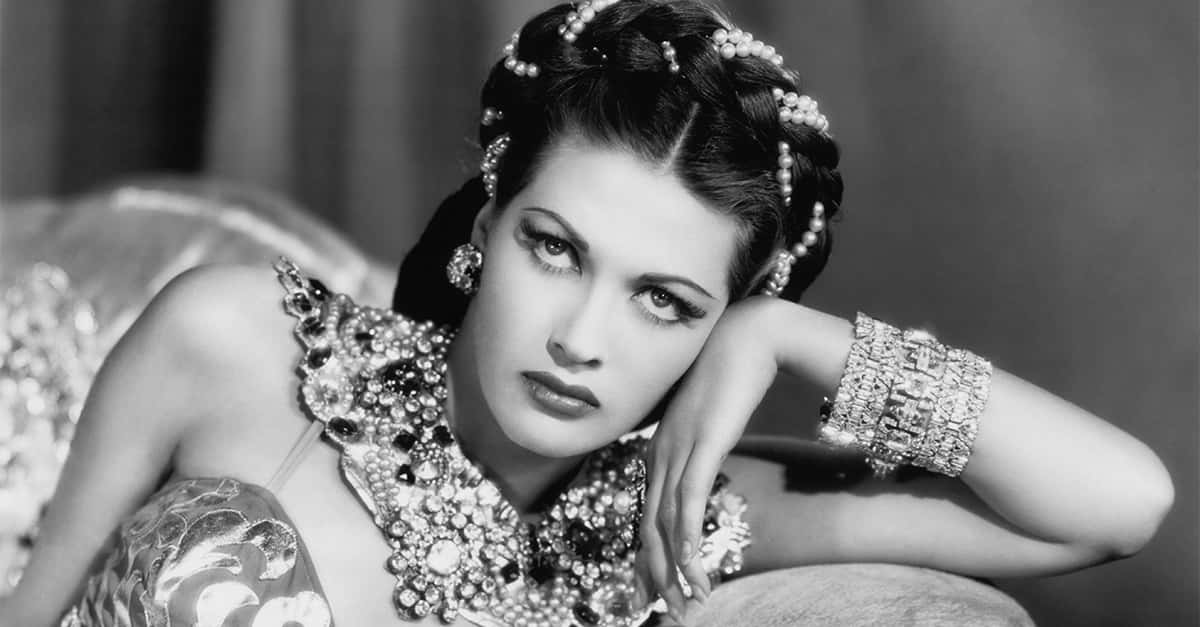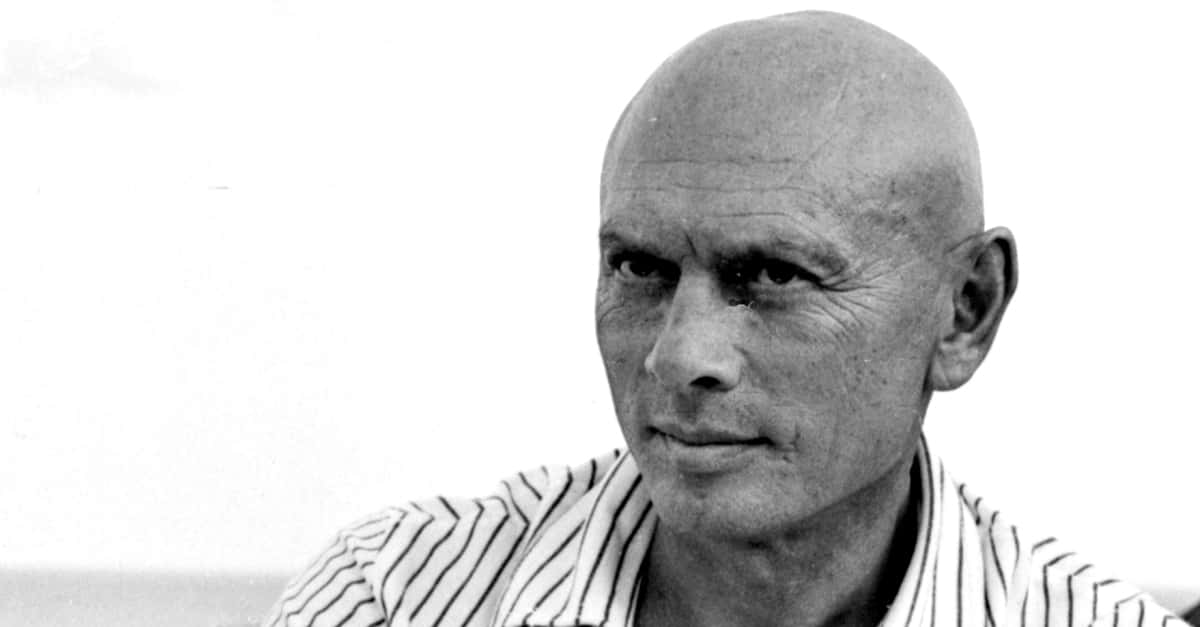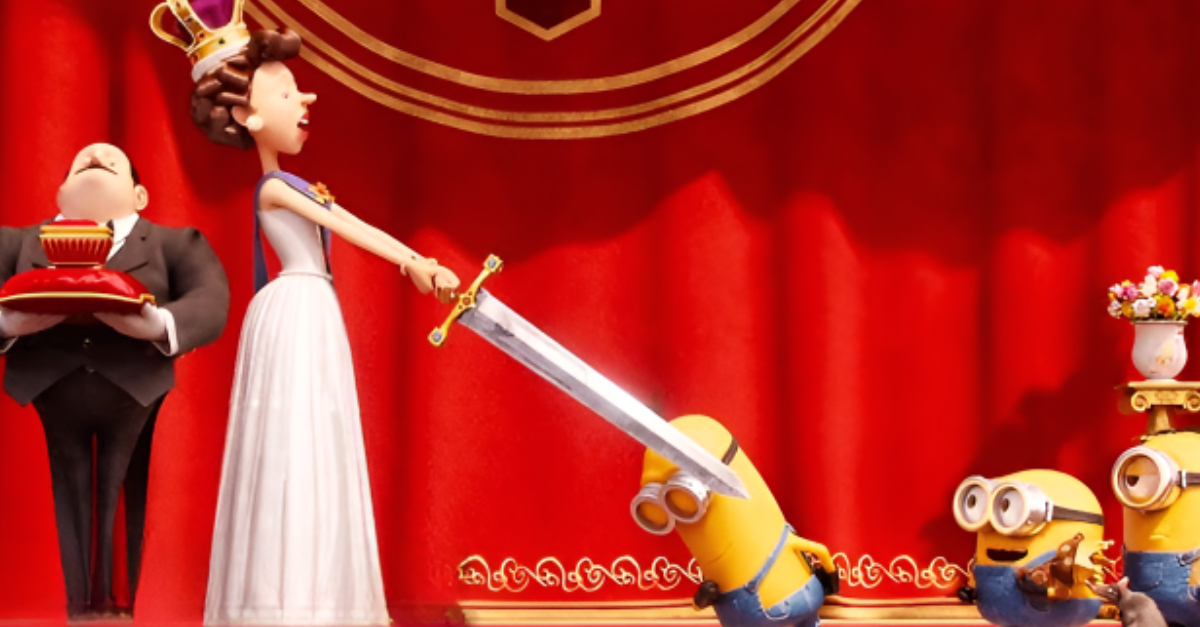She Lived Large
Most folks find it hard not to think of a hat full of fruit when they hear the name Carmen Miranda. Certainly, there was much more to this powerhouse performer from Brazil who took America by storm with her singing, dancing, and comedic acting chops. As it turned out, it was this strong association with Latin culture that brought about the tragic and early end to her vibrant career and life.

1. She Was Born To Be A Diva
Carmen Miranda was born as Maria do Carmo Miranda da Cunha on February 9, 1909, in a small village in the north of Portugal. She was the second child of Jose Maria Pinto da Cunha and Maria Emilia Miranda. Her father loved opera music, so when she was christened, he named her after the lead character in Bizet’s Carmen.
Her life was going to be as dramatic as an opera diva’s.
 New York Sunday News, Wikimedia Commons
New York Sunday News, Wikimedia Commons
2. She Made A Big Move
Before her mom had become pregnant with Carmen Miranda, the family had a big move planned to Brazil. With the news of the baby, the plans got a major overhaul. Following Miranda’s birth, Dad would move to Rio de Janeiro and open a barber shop and settle there. Just one year later, Mrs Cunha and her two daughters would catch up with him.
They did meet up, but there were big changes in Carmen Miranda’s future.
3. She Found Her Calling
Once the family was in Brazil, it grew quickly. Miranda now had five siblings, and they all felt a musical passion like Dad had for the opera. But it wasn’t opera that caught Miranda’s attention. She soon became very curious about all kinds of music, and also dancing. At a very young age she decided to pursue a career in show business.
But where she thought she’d find support, she found a huge obstacle.
 Fox Studios, Wikimedia Commons
Fox Studios, Wikimedia Commons
4. She Made Him Angry
Dad’s love of music didn’t go much beyond opera, so when Miranda told him about her plan to get into showbiz, he was furious. When he found out that Miranda had auditioned for a local radio show, he went ballistic and cruelly took it out on her mother. Mom didn’t let her husband’s beating stop her, she still supported her daughter.
But Dad wasn’t the only obstacle.
5. She Had To Pay
In 1923, Miranda’s sister got sick with tuberculosis and had to be rushed back to Portugal for life-saving treatment. Sadly, this came at a very high cost, and Miranda had to pay for it. At the age of 14, Miranda started working to pay her sister’s medical bills. First, she worked at a tie shop, eventually she moved on to a boutique.
Her showbiz dream had hit a brick wall, but then fate stepped in to save it.
 Annemarie Heinrich, Wikimedia Commons
Annemarie Heinrich, Wikimedia Commons
6. She Had A Chance Encounter
In a chance meeting, Miranda came across composer and musician Josue De Barros, who helped Miranda record her first single, "Não vá Simbora", with Brunswick Records. Her second single, “Prà Vocé Gostar de Mim”, was a collaboration with Joubert de Carvalho, and it managed to sell over 35,000 copies in the first year alone.
It was a big start, and Miranda was headed somewhere even bigger.
 Autor desconhecido, Wikimedia Commons
Autor desconhecido, Wikimedia Commons
7. She Was In Everyone’s Home
In 1933, Miranda signed a contract with Radio Mayrink Veiga, which at the time was the most popular radio station in Brazil. With this contract, she became the very first contract singer in the country. More contracts with different stations followed until she became the highest-paid radio singer in the country and a household staple.
But Miranda was about to become much more than just a singer.
 Unknown authorUnknown author, Wikimedia Commons
Unknown authorUnknown author, Wikimedia Commons
8. She Changed The Country
Brazilians were, at this time, reviving their feeling of nationalism. Somehow, Carmen Miranda became an icon of this movement. It wasn’t just her singing, her personality began to make Brazilians feel more proud of their culture. She was such an icon that she earned different nicknames which included the “Laughing Dictator of Samba”, and “The Little Remarkable”.
Of course, her career could only move forward from here.
9. She Was An Obvious Choice
As Brazil’s cultural moment grew and grew, the country started producing musical films. Of course, Miranda was an obvious choice as a performer. In 1935, she made Hello, Hello Brazil!.
This performance gave her the title of the most popular figure in Brazilian cinema, according to Cinearte magazine.
This was all great, except for one thing. She still hadn’t spoken a word on film.
 Unknown authorUnknown author, Wikimedia Commons
Unknown authorUnknown author, Wikimedia Commons
10. She Played Herself
After she made Hello, Hello Brazil, Miranda got a part in the film Estudiantes. In this film, she plays a young woman very much like herself. The big difference here was that Miranda was finally going to get some dialogue. Sadly, she only had four lines. But you know what they say, the only way from the bottom is to the top.
 Desconhecido (Producao: Adhemar Gonzaga e Wallace Downey), Wikimedia Commons
Desconhecido (Producao: Adhemar Gonzaga e Wallace Downey), Wikimedia Commons
11. She Hit The Top
In 1936, Miranda started working on Hello, Hello, Carnival!. This production contained 23 musical numbers and something unheard of in a Brazilian production at the time. The film set was a lavish reproduction of Rio's plush Atlantico Casino. The poster made it obvious who the star of the show was. Her name was in large letters and on top of the list. There was also a full body shot of her in the poster.
Now it was time for her crowning glory.
 Desconhecido (Acervo Cinédia), Wikimedia Commons
Desconhecido (Acervo Cinédia), Wikimedia Commons
12. She Wore A Hat
In her later career, most people equated Carmen Miranda with her always-present fruit hat. Well, it was in 1939 that she first donned this iconic headwear. And contrary to popular belief, they didn’t make the hats with real fruit. They come from the film Banana da Terra and were part of the traditional dress of poor Black girls at the time.
Miranda became so famous that Americans wanted a piece of her too.
 FIRST TIME Carmen Miranda put FRUITS on her HEAD, Carmen Miranda Brasil
FIRST TIME Carmen Miranda put FRUITS on her HEAD, Carmen Miranda Brasil
13. Broadway Called Her Name
Eventually, Miranda’s talent caught the attention of an American. This was producer Lee Shubert, who offered Miranda a contract to perform in The Streets of Paris on Broadway for eight weeks. Miranda was likely over the moon with joy, but she wasn’t too stunned to forget her negotiation skills.
14. She Was A Shrewd Negotiator
Yes, Shubert wanted Miranda, but she had some demands of her own. She said she would not go to New York without her own band. Schubert thought this was ridiculous as New York was full of capable musicians to form a band. They were at a standstill and needed someone to help figure this out.
 Unknown photographer, Wikimedia Commons
Unknown photographer, Wikimedia Commons
15. She Got A New Job
Miranda wanted her band, and Shubert was not budging. Afraid of losing Miranda, Shubert then offered to hire her band but cleverly refused to pay to bring them to New York. That’s when the Brazilian government stepped in and picked up the tab.
But the government had a reason for paying for Miranda’s band.
 John Springer Collection, Getty Images
John Springer Collection, Getty Images
16. She Was Serious
Brazil’s president, Getulo Vargas, paid for Miranda’s band hoping that Miranda’s image would encourage Americans to buy more Brazilian coffee. For her part, Miranda was out to sell more than just coffee. She wanted to represent her country, and she did it with very serious intentions.
As she boarded the ship to come to America, she had no idea that this move would bring about the end of her career.
 Desconhecido. Colorida por Djalma Gomes Netto., Wikimedia Commons
Desconhecido. Colorida por Djalma Gomes Netto., Wikimedia Commons
17. She Hit The Ground Running
On May 18, 1939, Miranda and the band arrived in NYC. She spent just one day settling in before hitting the stage. While her role in The Streets of Paris was small, her performance was big. It was big enough to get the notice of New York Times critic Walter Winchell. He said a star had been born.
But it was more than that.
18. She Made A Fan
At this time, Broadway shows had been in a bit of a financial slump. Ticket sales had flat-lined, and they needed someone to change that. Winchell said that Miranda had the potential to save Broadway. Winchell became Miranda’s biggest fan and continued to endorse her on his radio show.
As it turned out, Winchell wasn’t her only fan.
 Unknown photographer, Wikimedia Commons
Unknown photographer, Wikimedia Commons
19. She Gave Off Heat
While New York Times critic Brooks Atkinson gave The Streets of Paris a “meh” review, he praised Miranda’s performance. He suggested that the heat her performance generated would make the theater’s air conditioning have to work extra hard. Next, she’d heat up the most important house in America.
20. She Met The Big Guy
Since Miranda had saved Broadway from declining ticket sales, she got the opportunity to meet someone big. In fact, he was the most important man in America. At a White House dinner, Miranda got to meet Franklin D Roosevelt. Since the president was a fan, Hollywood also got in line.
 Leon Perskie, Wikimedia Commons
Leon Perskie, Wikimedia Commons
21. They Made A Film Just For Her
Miranda had become a Broadway sensation, and the rumor was out there that she had an interest in film. When 20th Century Fox heard about it, they immediately created a movie specifically for Miranda. They named the film The South American Way, which they borrowed from one of the songs she’d performed on Broadway.
Miranda was now a star in the US. It was time for a homecoming in Brazil to feel the love of her people. Well, that didn’t quite happen.
 Carmen Miranda - South American Way, CarmenMiranda.FC
Carmen Miranda - South American Way, CarmenMiranda.FC
22. She Received A Strange Reception
When a very proud Miranda returned to Brazil in July 1940, fans cheered, but the press quickly turned on her. They accused her of selling out to American commercialism and reinforcing stereotypes. Some even went so far as to call her image “too Black” and a “Latina bimbo”. Don’t forget Miranda was not even South American, she was from Portugal.
Miranda would have to put up with the critics, but at least the public still loved her. Or did they?
 Fox Studios, CC BY-SA 4.0, Wikimedia Commons
Fox Studios, CC BY-SA 4.0, Wikimedia Commons
23. She Made A Big Mistake
On July 15, 1940, Carmen Miranda performed at a high-society charity event in Brazil—but things went terribly wrong. For some reason, she decided to speak to the audience in English. This rubbed her fans the wrong way, and they booed her in the middle of one of her songs. Sadly, she left the stage crying.
But after the tears, she sought revenge.
 Unknown authorUnknown author, Wikimedia Commons
Unknown authorUnknown author, Wikimedia Commons
24. She Struck Back
Hurt by the backlash in Brazil, Miranda fired back with the song “Disseram que Voltei Americanizada” which translates to: “They Say I’ve Come Back Americanized”. She also recorded “Bananas Is My Business”, which poked fun at her Hollywood persona. She may have felt that she got her revenge, but still, she wouldn’t return to Brazil for another 14 years.
She headed back to America where fans still loved her.
25. The President Needed Her
Miranda had already met then-President Roosevelt, and now he needed her help. He had something called a Good Neighbor policy and he wanted Miranda to work on it. This policy was all about keeping things friendly between the US and Latin America. Even though she had few friends back in Brazil, she helped strengthen the relationship with the US.
And there was certainly some tension that needed easing.
 Unknown or not provided, Wikimedia Commons
Unknown or not provided, Wikimedia Commons
26. The Studios Wanted Her
The US had a reputation for meddling in the affairs of Latin American countries. Roosevelt wanted to fix that, and he thought Hollywood could help. Walt Disney and 20th Century Fox stepped up with their services, and they turned to Miranda as a representative of Latin America. This definitely helped her Hollywood film career.
But it was actually her stunning star power that was helping her career soar.
 Fox Studios, Wikimedia Commons
Fox Studios, Wikimedia Commons
27. She Outshone Them
In 1941, Miranda appeared in That Night in Rio. Miranda was a sort of third wheel as this film was the sixth—and final—film to feature Don Ameche and Alice Faye. Third wheel or not, Miranda was the only one of the three to receive outstanding critical approval. That same year, she became one of the first Latinas to leave her handprints at Grauman’s Chinese Theatre.
It was now time for Miranda to branch out. But there would be disastrous consequences.
 Desconhecido (Divulgação: 20th Century Fox), Wikimedia Commons
Desconhecido (Divulgação: 20th Century Fox), Wikimedia Commons
28. She Became Generic
Miranda was flying high in Hollywood, and everyone wanted a piece of her. The thing was, they didn’t want to limit her films to ones about Brazil. So Miranda adopted a generic “Latin” image. While this certainly meant more and more acting jobs for Miranda, it also meant a horrible backlash.
 New York Sunday News, Wikimedia Commons
New York Sunday News, Wikimedia Commons
29. They Banned Her
In 1941, when Miranda appeared in Weekend in Havana, Cubans felt betrayed to have a non-Cuban represent them. The same thing happened with Down Argentine Way, which ended up with a ban from Argentina. Argentinians said she was “wrongfully portraying life in Buenos Aires”.
Miranda’s career was flatlining—and then things went from band to worse.
 Fox Studios, Wikimedia Commons
Fox Studios, Wikimedia Commons
30. She Was Exposed
While filming Weekend in Havana, Miranda forgot —or just didn’t bother—to wear any underwear. A photographer caught a picture of what was under her skirt, and it hit the media. Folks back at home did not find this funny, and her career took a hit. But there was more bad news coming for Miranda.
 20th Century Fox, Wikimedia Commons
20th Century Fox, Wikimedia Commons
31. She Lost Her Color
After WWII, 20th Century Fox did something strange with Miranda’s films: they shot them in black and white. Miranda had relied on color to transmit her passion and in black and white she fell flat. Moviegoers were losing interest in Latin American stars, and this switch to black and white was a nail in her coffin.
Another nail came from the critics.
 Desconhecido (20th Century Fox), Wikimedia Commons
Desconhecido (20th Century Fox), Wikimedia Commons
32. She Didn’t Evolve
In 1945’s backstage musical Doll Face, Miranda went down to fourth billing as Chita Chula, “the little lady from Brazil”. Here she had only one musical number and barely any lines. To make matters worse, the critics had turned on her. The New York Herald Tribune simply said: “Carmen Miranda does what she always does, only not well”.
The writing was on the wall, but Miranda wouldn’t quit.
 Carmen Miranda - Chico Chico (From Puerto Rico), CarmenMiranda.FC
Carmen Miranda - Chico Chico (From Puerto Rico), CarmenMiranda.FC
33. She Dished Out More Of The Same
1946’s If I’m Lucky found Miranda doing what she usually did. She had her accent, her vocabulary mistakes, and those career-defining turbans. The audiences and critics had had enough, and the studio had no idea how to take Miranda to a different level. It was time for her to take her career into her own hands.
 If I'm Lucky | Carmen canta em Hollywood, Amor a Carmen Miranda
If I'm Lucky | Carmen canta em Hollywood, Amor a Carmen Miranda
34. She Took A Risk
On January 1, 1946, Miranda had an opportunity. Her contract with 20th Century Fox would expire on that date, and it looked like staying with them would mean continuing to do the same old thing. Miranda decided to walk away. It was time for her to go out on her own and do films that would break the stereotype they’d forced her to portray.
This could go very, very wrong.
 George Konig, Wikimedia Commons
George Konig, Wikimedia Commons
35. She Changed Her Hair
United Artists' Copacabana had two firsts. It was Groucho Marx’s first film without his “brothers”, Harpo and Chico, and Miranda’s first film away from the controlling 20th Century Fox. Miranda certainly felt free—free enough to do some scenes in a blonde wig.
This would not go over well.
 Copacabana (1947) - Carmen Miranda -
Copacabana (1947) - Carmen Miranda -
36. She Ruffled Some Feathers
When word got out that Miranda was appearing in some scenes of Copacabana wearing a blonde wig, there was a public outcry. The letters poured in from her Brazilian fans and United Artists listened. They reshot the scenes with Miranda dark-haired as usual. Because US audiences didn’t care, they only inserted the new scenes when the film played in Latin America.
Miranda always seemed to be under close scrutiny. Well, that would eventually pay off.
 No identifying marks, most likely United Artists, the distributor of the film., Wikimedia Commons
No identifying marks, most likely United Artists, the distributor of the film., Wikimedia Commons
37. She Was Being Watched
During the filming of Copacabana, one of the investors sent his brother to the set to make sure they were using his money carefully. The investor was particularly concerned that his brother kept an eye on Carmen Miranda herself. Well, the brother, David Sebastian, kept his eye on Miranda for a good long time. So long that the two started dating.
 Associated Press, Wikimedia Commons
Associated Press, Wikimedia Commons
38. She Lost It
On March 17, 1947, Miranda and David Sebastian walked down the aisle of the Church of the Good Shepherd in Beverly Hills. By 1948, Miranda was already pregnant. Miranda wanted to work during her pregnancy, but this turned out to be a disastrous idea. After one of her shows, she miscarried.
This loss was hard on Miranda, and even harder on her marriage.
39. She Couldn’t Continue
Miranda was not well after her miscarriage, and the marriage was unable to continue with Miranda in that state. A divorce seemed like the obvious choice except for one thing. Miranda was serious about Catholicism and didn’t want a divorce. In September 1949, Miranda announced that they were separating.
It was time to refocus on her career.
40. She Joined Some Sisters
By the late 1940s, Miranda’s film roles had all but dried up, but she still had her voice. From 1948 to 1950, she found musical partners in the Andrews Sisters. They recorded three singles for Decca Records. Their biggest hit—“Cuanto La Gusta,”—made it to number 12 on the Billboard charts.
But she was not ready to give up on films just yet.
 American Stock Archive, Getty Images
American Stock Archive, Getty Images
41. She Toned It Down
MGM took hold of Carmen Miranda and cast her in A Date with Judy and Nancy Goes to Rio. The idea in these films was to represent a different Miranda. She was more elegant, her makeup was less extreme, and she even got rid of the turban. Sadly, her character continued in the same vein and her roles were tiny.
Next, she’d join up with two of America's funniest men.
 Author of photo unknown (Distribution:Metro-Goldwyn-Mayer), Wikimedia Commons
Author of photo unknown (Distribution:Metro-Goldwyn-Mayer), Wikimedia Commons
42. She Went Back To Square One
In Scared Stiff, Miranda plays opposite comedians Dean Martin and Jerry Lewis. Sadly, this final film did not do her any service. Her character was not really part of the plot. To make matters worse, funny man Lewis parodies Miranda’s singing style and even plucks a banana from her turban and eats it.
If films were no longer working, Miranda still had one thing to fall back on.
 Paramount Studios, Wikimedia Commons
Paramount Studios, Wikimedia Commons
43. She Worked Too Hard
In April 1953, Miranda stopped making films and started a European tour that lasted four months. After this grueling tour, she returned to the States and continued to perform. By the fall, the difficult schedule was taking a toll on her health. In October, the worst happened. She collapsed while performing.
Clearly, she had pushed herself too far.
44. She Needed Help
Miranda had since reunited with her husband, and he took her to LeRoy Sanitarium where she received treatment. For one of the first times in her life, Miranda canceled shows due to her health. During this period, Miranda indulged in some harmful pastimes. These included smoking, drinking, and the use of amphetamines and barbiturates.
But she wasn’t through with show business just yet.
45. She Had To Finish
In August of 1955, Miranda was filming a segment for The Jimmy Durante Show. She said she didn’t feel well, but she did not want anyone to replace her. She performed a song-and-dance number and then collapsed. Always the professional, Miranda insisted on finishing the scene. The shoot wrapped at around 11 pm, and Miranda seemed to be fine.
She then made a very bad decision.
46. She Continued To Party
The fact that she had collapsed didn’t seem to slow Miranda down. Even once the cameras were off, Miranda and Durante continued to perform for the cast and crew. But Miranda hadn’t finished yet. She then invited some of the cast members and friends back to her place for more fun. She didn’t start getting ready to sleep until around 3 am.
She would never make it to bed.
47. She Hit The Floor
Once all the guests had gone home, Miranda started removing her makeup. Next, she headed to her bedroom carrying a small mirror. On her way there, she suffered a heart attack and hit the floor. They discovered her lifeless body the next morning. Carmen Miranda was no more.
 New York Sunday News, Wikimedia Commons
New York Sunday News, Wikimedia Commons
48. She Went Back Home
Even though Miranda passed unexpectedly, she had made arrangements for her funeral. She wanted to wear a red suit and have the Brazilian flag laid across her coffin. Of course, she also wanted to be in Brazil. She got her wish and 500,000 mourners hit the streets of Rio to bid her farewell. It looked like her biggest fans had finally forgiven their biggest star.
And it’s clear they’ll remember her forever.
 Unknown authorUnknown author, Wikimedia Commons
Unknown authorUnknown author, Wikimedia Commons
49. They Keep Her Memory Alive
To keep Miranda’s memory alive, American fans can walk through Carmen Miranda Square in Hollywood and even use a postage stamp made in her honor. Her Brazilian fans can visit the Carmen Miranda Museum in Rio De Janeiro. Also, collectors can purchase a Bob Mackie-designed Barbie that used her image as an inspiration. Not surprisingly, the doll wears fruit on her head.
It seems that the image of her fruit on Miranda’s head will never go away.
 Secretaria de Cultura. Governo do Rio de Janeiro., Wikimedia Commons
Secretaria de Cultura. Governo do Rio de Janeiro., Wikimedia Commons
50. We Can’t Forget The Fruit
In 1989, folk singer Leslie Fish released the song “Carmen Miranda’s Ghost”. Even years later, Miranda is still known for what she wore on her head. The song contains the cheeky line: “Carmen Miranda’s ghost is haunting Space Station Three. Not that we’re complaining since the fresh fruit all comes free”.
 Carmen Miranda in THE GANG'S ALL HERE | TCM, Turner Classic Movies
Carmen Miranda in THE GANG'S ALL HERE | TCM, Turner Classic Movies
You May Also Like:

